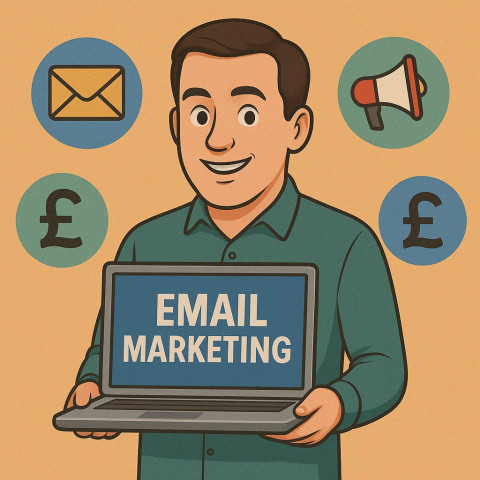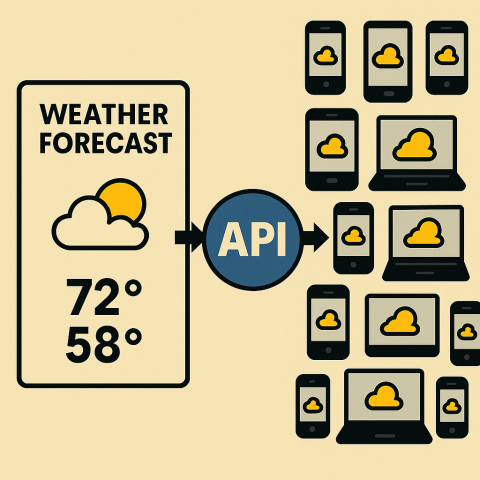Business Plans - Comprehensive Guide Part 5
Creating a comprehensive Business Plan is essential for ensuring the structured and sustainable growth of any enterprise. This document should encompass detailed business operation plans to streamline processes and optimise efficiency. Financial plans and sales forecasts are crucial for projecting future revenues and managing resources effectively. Estimating profits and conducting break-even analysis provide valuable insights into financial viability and performance benchmarks. Additionally, outlining business insurance needs safeguards against potential risks, while measuring financial performance helps track progress and make informed strategic decisions. By addressing these key elements, the document serves as a robust guide for achieving business success.
1. Business Operations Plan
i. Operations
- State the capacity and efficiency of your operations, and any planned improvements
- Explain where you are currently and what still needs to be done.
- How are you going to keep accurate records for stock, sales, accounts and quality control?
ii. Premises
- Do you have a business property? Do you own or rent it?
- What are the advantages and disadvantages of your current location?
- Are you looking for a business premise? What location and type of premises are you looking at?
- Does your current or future premises meet your current and future requirements?
- Is it suitable for long-term growth?
- What are the long-term commitments to the property?
iii. Production facilities
- Do you need your own production facility or would it be cheaper to outsource any manufacturing processes?
- How is production organised?
- How modern are the facilities and the equipment?
- What is the capacity of the current facilities compared with existing and forecast demand?
- Will any investment be needed?
iv. Suppliers
Who are your key suppliers? How do you select and manage them?
v. Management systems
The Management systems used will differ depending on your:
- Business model
- Trading location
- The quantity of staff and their roles
- Materials and suppliers
- Equipment and tools
- Transport and distribution
A financier will be very concerned if management information systems are inadequate.
Management of a business is always limited by the quality of the information available.
- What system/s, processes and procedures do you use for; accounts, sales, stock control and quality control?
- Are your systems, processes and procedures able to deal with any proposed expansion?
- Are there any planned developments for the systems?
- IT is a major factor in most businesses so it is important to include your strengths and weaknesses in this area
- What contingency plans do you have if something goes wrong?
- What quality or regulatory standards does the business conform to? For example, ISO 9000 or CE approval, legal requirements and insurances?
2. Financial Plans
An essential section of your Business Plan is the Financial Plans. It can give you confidence in your Business and a greater understanding of where to allocate resources, the ability to spend wisely and that you are fully committed to your financial obligations. It also shows investors where your Business currently is and how much from sales and investments are required to reach financial goals.
TIP:
If you are a Microsoft user, then create your financial statements in Excel.
Highlight the information and use ‘Copy (CTRL+C)’, then paste ‘(CTRL+V’) into your "Financials" slide.
i. Capital requirements plan
If you are a new start-up or an existing business which needs external funding, include a Capital Requirements plan to the Financial section of your Business plan.
The capital required can be for long term requirements such as machinery or vehicles or short term for things like materials and current expenses.
Whatever the funding is required for you will need to show financially that it’s viably required and you can pay it back.
- Detail the requirements for the capital
- How much is invested in the business already and by who
- What the money will be spend on
- How it will help the business reach its goals
- How much the monthly payments will be
- What the interest rate is
- How long it will take to pay it back
ii. Sales Forecast
A Sales Forecast estimates the annual revenue of products and services and anticipated expenses, providing an overall performance of the business at any given point in time.
- What sales method will you use to sell your product? B2B, B2C, online, retailers, shop, agents, telesales etc.
- What is the average sales value and how likely is it that customers will give repeat orders?
Remember, the key is to ensure time and thought goes into a realistic projection of income along with periodically reviewing past and future demand.
Many accounting packages have a Sales forecasting function.
Realistically, sales forecasts are straightforward to calculate once you have the necessary information.
For Selling Products
- An estimate of the number of sales broken down by each product or product group per month for a year (this should match your accounts).
- An estimate of the number of sales returned or cancelled, if applicable.
- An estimate of the unit cost of the product or service.
The formula to use is:
FORECAST SALES = (NUMBER OF SALES – RETURNS) X UNIT PRICE
For Selling Services
- An estimate of the number of hours or days you will be able to invoice your clients for, broken down month by month. Identify your quieter or busier periods, such as holidays, conferences, and exhibitions.
- Remember to exclude the time spent generating business, particularly in the early days. Activities like networking, exhibiting, pitching, computer downtime, invoicing, and marketing are all non-billable.
- Incorporate a contingency figure to account for work that may take longer than quoted or require additional expertise or research.
The mathematical formula to use is:
FORECAST SALES = (BILLABLE MONTHLY HOURS X HOURLY RATE) X 12 months
Start-up sales forecasting
With no historical data Start-Up’s need to use other methods for the calculations.
- The industry
- Marketing trends
- Estimated Profits for products or services
- Research
- Cash Receipt forecast
- Break Even Analysis
- Expenses:
- Start-up costs
- Operating expenses
- Personal Survival budget
- Personal survival budget
Completing a Personal Survival Budget will enable you to identify if you are going to need to draw on some of your Business earnings to support yourself.
A Personal Survival Budget details your average monthly income minus all the costs and expenses you would incur in a typical month.
It should not include income from your partner, family, or friends, nor any income that will stop when you start the new business.
Refer to your bank statements from the last 6-12 months to get an average of your living costs.
It is important to make your budget flexible and track your expenses and progress regularly.
Personal Income:
- Income from Family / Partner
- Part time job
- Benefits
- Use of personal savings
- Other Income
Total Income = X
Personal Expenses:
- Rent / Mortgage
- Personal loan(s) Repayments
- Council tax
- Electricity / gas
- Water
- Mobile phone
- Broadband
- TV Licence
- Personal and Property Insurance
- Transport e.g. Oyster card
- Entertainment and Holidays
- Subscriptions
- Food
- Clothing
- School / Childcare
- Car tax & insurance
- Car running expenses (inc fuel)
- Contingency
- Money put into savings
- Children Expenditure
- Miscellaneous Expenses
- Other expenses
Total Expenses = Y
TOTAL EXPENSES = INCOME (X) - EXPENSES (Y)
IV. Estimated profits
Product estimated profits:
X Estimate the future sales for each product or service
Y Note the sales price for each product or service
Z Note the cost to supply each one
Product estimated profits formula:
Y minus Z = multiplied by X = estimated profit
Your sales and revenue forecast can now be estimated knowing the mark-up on each product or service and the estimated profit too.
Services estimate profit
Calculate the monthly breakdown of the estimated number of hours or days that you will be able to invoice your customers.
Research
Consumer trends and economic stability can impact forecasting and are out of your control, so research is key in helping you estimate sales projections and produce reliable forecasts and will make the figures more appealing when seeking funding.
Look at the performance of your competitors or companies operating in a similar market to you. If you have connections with founders or friends with similar enterprises, take them for a coffee and ask about their sales patterns.
Companies House publishes the accounts for most UK companies, this will give you a good indication of business performance.
V. Cash Receipt forecast
A Cash Receipt forecast considers the revenue for the estimated sales.
If you offer customer payment credit terms your forecast will show these in the following month of the sale.
For businesses VAT registered the Credit Receipt Forecast will show revenue inclusive of VAT, this is the total your customers pay for your goods and services.
VI. Break-even analysis
A Break-even analysis shows when your Business will become profitable i.e. you have more revenue coming in than expenses going out.
Break-even analysis benefits:
- How many things that you need to sell to make a profit
- If a product is worth selling
- Missing expenses can be identified
- Make business decisions based on fact rather than emotions
- Goal setting
- Product or service appropriate pricing
- The revenue at each level of output.
Investors will want to see your estimated date of profitability supported by the financial projections supplied.
Break-even formula
Fixed Costs ÷ Contribution Margin* OR Fixed Costs ÷ sum (Price of Product – Variable Costs)
*Contribution Margin = Price of Product – Variable Costs
Fixed Costs
Expenses, independent of any specific business activities, that a business incurs, over a set period of time and that do not change with production levels.
- COGS
- Depreciation
- Lease of equipment
- Insurances and loans
- Payroll
- Loan payments
- Utilities
Variable costs
An expense that changes in proportion to production or sales:
- Raw materials
- Wages eg. Commission based
- Commissions
- Marketing
- Shipping
- Credit card fees
Example:
The Excel Car Valeting Company incurs fixed costs of £1,000 per week, which include renting space for car cleaning and an onsite office (£250), staff salaries (£700), and insurance and loan repayments (£50).
The company charges a fixed price of £20 for a standard family car valet, which includes wax and polish, vacuuming, topping up the windscreen wash, car shampoo, and wash.
The variable costs per car amount to £7.50, broken down as £2 for car cleaning materials, £5 for windscreen wash refill, and £0.50 for utilities (water and electricity).
£1,000 (fixed costs) divided by (£20 valet cost – £7.50 variable cost) = 80 cars need to be valeted each week to reach the break-even point.
VIII. Expenses
Operating Expenses
Operating Expenses detail the costs incurred by a business during its normal daily operations.
Figures to maintain the business will be required for the first year to the fifth year. Include any anticipated needs for additional funding.
Example
|
Salaries |
Utilities |
Vehicles |
|
Rent/Mortgage |
Office Supplies |
Depreciation |
|
Equipment |
Interest |
Repairs & Maintenance |
|
Outsourcing Bills |
Postage |
Taxes - Payroll |
|
Marketing/Advertising |
Licences |
Taxes - Other |
|
Accounting & Legal |
Business Subscriptions |
Miscellaneous |
|
Office Space |
Insurances |
|
|
Travel |
Phone |
For existing businesses previous historic data, financial forecasts and statements will help.
It is extremely important to set realistic timescales.
For businesses VAT registered the Sales Forecast will show revenue exclusive of VAT
viii. Business insurance
When you are starting a new business it is important to look at business insurance to protect you if anything goes wrong.
The general and invaluable Public Liability Insurance covers you if a member of the public gets injured or ill and blames your business.
Employers’ Liability Insurance is a legal requirement if you have staff, even 1 person.
If you give advice as part of your Business you will need Professional Indemnity Insurance.
Potential insurance that may be required:
- Public Liability
- Professional Indemnity
- Employers' Liability
- Contract Dispute
- Income Protection
- Critical Illness
- Life Cover
- Automobile Insurance
- Office or Home Insurance
A well-crafted Business Plan encompassing business operation plans, financial plans, sales forecasts, profit estimates, break-even analysis, business insurances, and financial performance metrics is essential for the success and sustainability of any enterprise. These elements provide a comprehensive roadmap for efficient operations, financial stability, and informed decision-making. By systematically addressing each component, the document ensures a thorough understanding of the business's financial health and operational efficiency
To view the other articles in this series follow this link: https://bespokeuk.com/post-cat...

Mailchimp Alternatives Guide 2025
Is Mailchimp still the best FOR EMAIL MARKETING? Or are UK businesses find...
5 min read

The Hidden Cost of Poor System Integration
Why Poor Integration Between Systems Is Holding Your Business Back And How...
8 min read

Admin Overload: The Silent Business Killer
The cost of manual, repetitive admin tasks In countless small and medium-s...
3 min read


